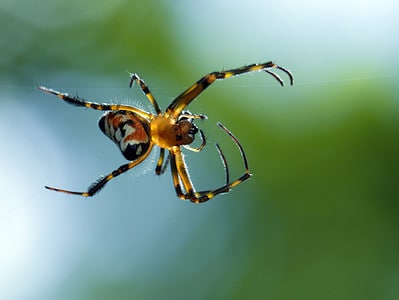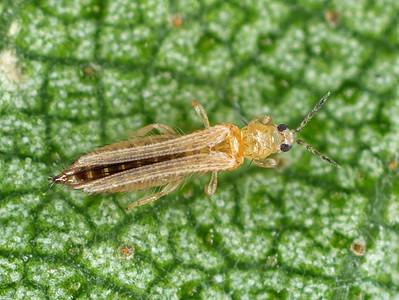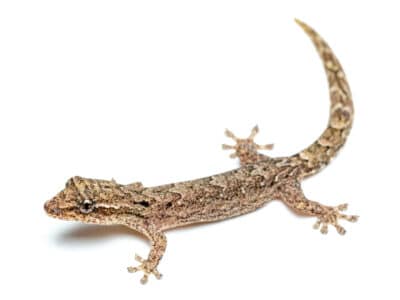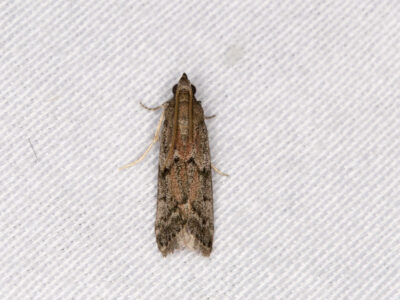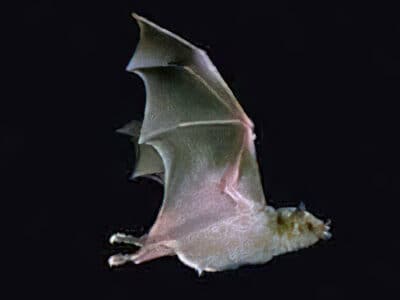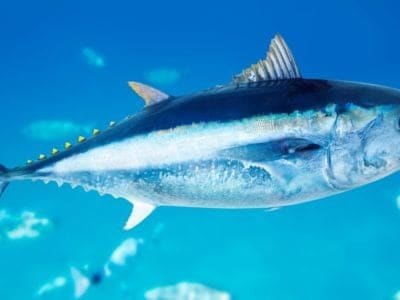Tropicbird
The tropicbird nests on tropical islands and cliffs.
Advertisement
Tropicbird Scientific Classification
Read our Complete Guide to Classification of Animals.
Tropicbird Conservation Status
Tropicbird Facts
- Main Prey
- Fish. Squid, Flying Fish
- Fun Fact
- The tropicbird nests on tropical islands and cliffs.
- Distinctive Feature
- Long pointed beak and large body size
- Wingspan
- 94 to 112 cm
- Incubation Period
- 40 to 42 days
- Habitat
- Tropical islands and cliffs
- Predators
- Dogs, Cats, Stouts
- Diet
- Carnivore
- Lifestyle
- Flock
- Favorite Food
- Fish
- Type
- Bird
- Average Clutch Size
- 1
- Slogan
- Nests on tropical islands and cliffs!
- Nesting Location
- Ground or rocky cliffs
- Age of Molting
- Adult feather appear at two to three years
- Migratory
- 1
View all of the Tropicbird images!
Tropicbirds are the common name given to one of three species of seafaring birds that are part of the Phaethontidae family.
The three living species are better known as the White-tailed tropicbird, the red-tailed tropicbird, and the red-billed tropicbird. The white-tailed variety is actually Bermuda’s national bird.
They live in mated pairs within small colonies of a few hundred to a few thousand birds. They can be found on islands, archipelagos, atolls, and other rocky formations in the Atlantic, Pacific, or Indian Oceans.
Tropicbirds prefer warmer climates with waters that are between 75- and 88-degrees Fahrenheit. They are common on the Hawaiian Islands, the Gulf of California, and certain areas of Brazil, Peru, and other central and South American countries. They have also made homes in Australia, Africa, Indonesia, Bermuda, and other island nations.
These birds have wingspans between 94 and 112 centimeters (cm) and can have tail feathers or streamers that are between 46 and 56 cm long.
4 Amazing Tropicbird Facts!
- Looking for some interesting facts about Tropicbirds? Check out these four amazing facts about this bird!
- Tropicbirds are Bermuda’s national bird and are a protected species there. They are also referred to as long tails on the island.
- Females will look to procreate again ten months after successful fertilization or five months if previously unsuccessful.
- They can perform complex maneuvers including flying backwards, making circles, and fast vertical ascents while courting a potential mate.
- The Tropicbird has a 16-year lifespan.
Where to Find Tropicbirds
The different species of tropicbirds are found in mostly warm, tropical regions in the Pacific, Atlantic, and Indian Oceans. For instance, the white-tailed tropicbird is the national bird of the island of Bermuda. However, humans have also observed this species in the warm waters around Hawaii to the west and in Florida to the east.
The red-billed species typically lives on islands south of the equator, such as the Galapagos Islands, and has a smaller distribution range than the other two types of tropicbirds. They are often found off the coast of Brazil on the Fernando de Noronha and Abrolhos Archipelago. It has been as far east as Namibia, Pakistan, Sri Lanka, and other nations around the Indian Ocean.
They generally nest close to shore on tall craggy cliffs in mated pairs. When not nesting, the males and females primarily spend their time far out on the ocean looking for food.
Tropicbird Scientific Name
There are three living, or extant, Tropicbird species. They are all members of the Phaethontidae family and the genus Phaethon. The red-tailed tropicbird is known as Phaethon rubricauda. The red-billed tropicbird’s scientific name is Phaethon aethereus while the white-tailed variant is Phaethon lepturus.
Tropicbird Size and Appearance
Tropicbird hatchlings typically have gray down when first born. As they mature, these gray feathers turn pure white. Depending upon which species it is, the adult tropicbird will have different black markings.
The main differences in appearance are aptly described by these birds’ common names. The red-tailed tropicbird has bright white feathers and a distinctive red tail. The red-billed species has a bright red beak to go along with its black facial markings and white body. The white-tailed tropicbird has black face markings, a white body and a white tail.
Tropicbirds have a wingspan between 94 and 112 centimeters. Their body is typically between 76 and 102 centimeters long.

©Antero Topp/Shutterstock.com
Tropicbird Behavior
Tropicbirds normally fly solo while hunting on the ocean for food. However, they usually live in monogamous pairs while nesting on the shore. When hunting for food, Tropicbirds most commonly hover above the water and quickly dive down to catch pretty.
They have a very piercing and loud call that they let off during a flight display. They often emit multiple calls in a row to draw attention to themselves.
Tropicbird Nests
These birds make nests on rock ledges or within cracks on the ground. They often make simple scrape nests as opposed to more complex and larger cup or platform nests. The tropicbird uses its talons to dig a depression in the sand or rock face that is just deep enough to keep its eggs from rolling away.
Tropicbird Diet
Tropicbirds live on islands, atolls, cays, and other rocky formations in the middle of the Atlantic, Pacific, and Indian Oceans. As a result, their diet primarily consists of marine life. They prefer to catch flying fish as they jump out of the water but will also eat squid.
They can dive down up to 15 feet to snag crabs and other crustaceans from the ocean floor near shore. They will often fly miles out to sea to catch and bring back food for their nesting mates.
Tropicbird Predators and Threats
The tropicbird’s biggest threats and predators are dogs, cats, rats, and other creatures that invade their nests. These creatures generally attack the eggs or young chicks. Larger birds, such as sea eagles with their sharp talons, can and do also prey on the tropicbird.
Humans and their tendency to overfish are another major threat to the tropicbird population. As the numbers of fish, crustaceans, and squid decline around their island homes, tropicbird numbers have also seen a rapid decline. Starvation and lack of nutrition are a major concern for the continued survival of these birds.
Tropicbird Reproduction, Babies, and Lifespan
Tropicbirds engage in a complex flying ritual to attract a mate. They will fly in large loops and high speeds and have even been observed flying backwards as part of this effort. The length and volume of a bird’s tail feathers is the primary driver for finding an acceptable mate.
Once the birds find a mate, they generally remain in breeding pairs while nesting on an island. The female lays one egg either on a protected rocky cliff or in a ground crack. She will generally roost for 40 or 42 days until the egg hatches. During that time. The male will generally fly out to sea and bring back food for his mate.
Chicks are not only blind but also cannot move when they are first born. They typically remain in the nest under their parents’ protection for two to three months. Throughout that time both parents take turns feeding their offspring until it is old enough and large enough to learn to fly.
Tropicbird Population
These birds live in mated pairs when nesting on the islands that they call home. They prefer to live near coral reefs and to have easy access to the ocean for hunting and feeding purposes.
These birds will live in colonies of up to several hundred pairs. For example, 30 colonies in the Galapagos Islands have several thousand individual birds. However, two colonies around the coast of California and Mexico might have only 300 to 400 birds.
The exact population is difficult to estimate because of its dispersed living areas across the world. However, some estimates indicate that there are about 5,000 white-tailed tropicbirds and as few as 2,000 of the red-billed species around the world.
The red-tailed tropicbird has the largest population of the three species. Latest estimates indicate that there are at least 40,000 of these birds in the eastern Pacific Ocean. However, that number could be as high as 80,000 or more.
View all 133 animals that start with TTropicbird FAQs (Frequently Asked Questions)
Are Tropicbirds herbivores, carnivores, or omnivores?
Tropicbirds are carnivores, meaning they eat other animals.
What Kingdom do Tropicbirds belong to?
Tropicbirds belong to the Kingdom Animalia.
Does the Tropicbird migrate?
Yes! The white-tailed Tropicbird does fly north in the spring and summer to islands around North America, including Hawaii and islands off the coast of California. In the cooler months, it will fly south to Mexico the Caribbean and other, more tropical locations.
How many eggs does the Tropicbird lay?
These creatures lay one egg at a time. Their eggs are typically an off-white or brownish color.
How fast does the Tropicbird fly?
The red-billed Tropicbird has a top speed of 27 miles per hour while foraging for food out on the sea. It will normally soar at altitudes up to 100 feet above the water looking for flying fish, squid, and other tasty marine life.
What is the Tropicbird’s Wingspan?
The Tropicbird’s wingspan ranges between 94 and 112 centimeters depending upon the specific species.
When do Tropicbirds leave the nest?
Tropicbird chicks cannot see or move when they are first born. Their parents bring them food back and regurgitate it down their offspring’s gullet. Fledglings only leave the nest only after two or three months.
What is the scientific name for Tropicbirds?
There are currently three living species of tropicbirds, including the white-tailed tropicbird, the red-tailed tropicbird, and the red-billed tropicbird. All three types are part of the Phaethontidae family and the Phaethon genus. The scientific name for each unique species is as follows:
- Phaethon aethereus, the red-billed tropicbird
- Phaethon rubricauda, the red-tailed tropicbird
- Phaethon lepturus, the white-tailed tropicbird.
Where do tropicbirds live?
These birds prefer warmer, tropical climates. They generally nest on islands with rocky cliffs but have also been known to lay their eggs directly on the ground. They often live in mated pairs but will go out to sea along to hunt for fish, crabs, and other food sources.
The white-tailed tropicbird lives in the Indian, Pacific, and southern Atlantic Oceans. It is common around the shores in Hawaii, but people have also seen it in Florida. It
The red-billed tropicbird lives in the eastern Pacific Ocean, the Central and Eastern Atlantic Ocean, the Caribbean and the Red Sea. They can be found in the Galapagos Islands, among others. The red-tailed tropicbird is common in the far eastern Indian Ocean, and the Pacific Oceans. These birds have been recorded on the African coast and all the way to Japan and Indonesia. However, they have also been spotted as far west and Chile.
What do tropicbirds eat?
These birds normally subsist on squid, flying fish, crabs and other crustaceans. They make long flights out to sea in search of food. They will first try to snatch fish as they jump out of the water. However, they have also been known to drive down as far as 15 feet to grab fish and other sea life in their beaks.
What class do Tropicbirds belong to?
Tropicbirds belong to the class Aves.
What phylum to Tropicbirds belong to?
Tropicbirds belong to the phylum Chordata.
What family do Tropicbirds belong to?
Tropicbirds belong to the family Phaethontidae.
What order do Tropicbirds belong to?
Tropicbirds belong to the order Phaethontiformes.
What genus do Tropicbirds belong to?
Tropicbirds belong to the genus Phaethon.
What type of covering do Tropicbirds have?
Tropicbirds are covered in Feathers.
In what type of habitat do Tropicbirds live?
Tropicbirds live in tropical islands and cliffs.
What is the main prey for Tropicbirds?
Tropicbirds prey on fish, squid, and flying fish.
What are some predators of Tropicbirds?
Predators of Tropicbirds include dogs, cats, and stouts.
What are some distinguishing features of Tropicbirds?
Tropicbirds have long, pointed beaks and large bodies.
What is an interesting fact about Tropicbirds?
Tropicbirds nest on tropical islands and cliffs!
What is the lifespan of a Tropicbird?
Tropicbirds can live for 10 to 16 years.
How do Tropicbirds have babies?
Tropicbirds lay eggs.
Thank you for reading! Have some feedback for us? Contact the AZ Animals editorial team.
Sources
- Wikipedia, Available here: https://en.wikipedia.org/wiki/Tropicbird
- Audubon, Available here: https://www.audubon.org/field-guide/bird/white-tailed-tropicbird
- Population Estimates, Conservation Concerns, and Management of Tropicbirds in the Western Atlantic, Available here: chrome-extension://ohfgljdgelakfkefopgklcohadegdpjf/https://www.fs.fed.us/global/iitf/pubs/ja_iitf_2000_lee.pdf








